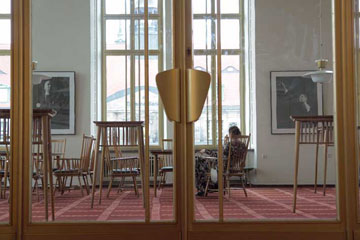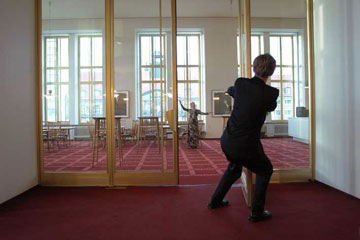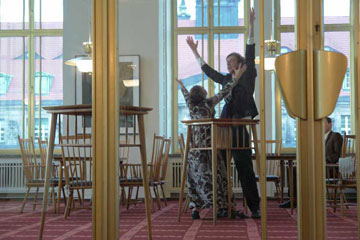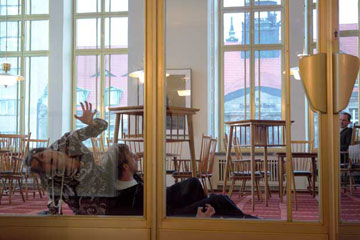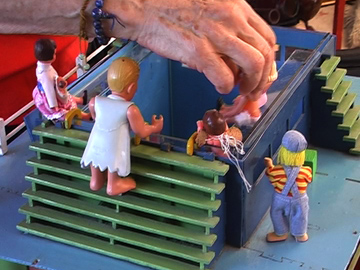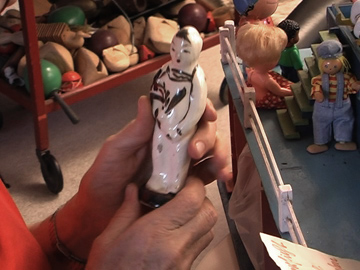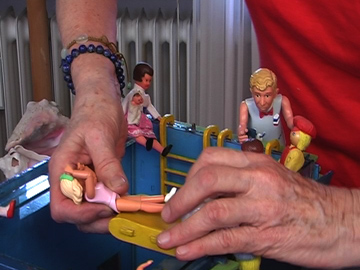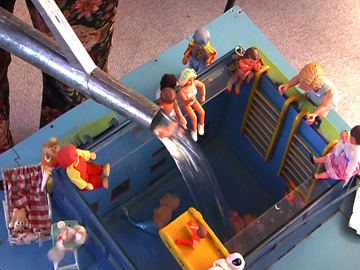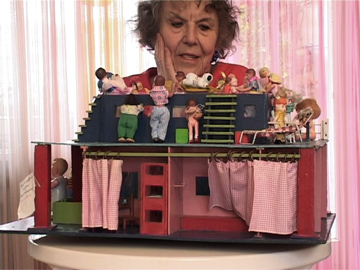Eine Frage (nach) der Geste
Eine Frage (nach) der Geste / 2006
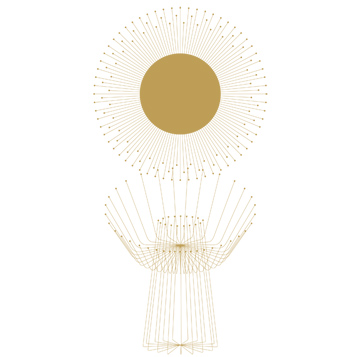
In cooperation with: University of Music and Theatre “Felix Mendelssohn Bartholdy”, Institutes of Theatre Research and Literary Studies at Leipzig University, Fotohof Salzburg, Edison Studio, Goethe Institute Rome and Vienna Poetry Academy.
>>> Participating Artists
>>> Exhibition
>>> Performances
>>> Video Programme
>>> Film
>>> Research
>>> Other Stations
>>> Thanks
>>> Project Website
Overture
Gestures are at the centre of our interest because, whether consciously or unconsciously, we move in a continual exchange of actions oriented to bodily communication, and in the perceptual field formed by them; because they harbour for action of which we fail to take sufficient advantage; because they tell us much about the mediatisation of human behaviour in a communication society; because they speak about the colonisation of body language, about cultural and social difference.
That is why we are posing “a question(ing) of gesture“: not in order to arrive at conclusive answers, but instead to search out possibilities for stimulating our thought and action and for introducing these into a broader social discourse, one which calls for exceptional perspectives, sharpened perceptions, critical questioning, and intuitive fantasy.
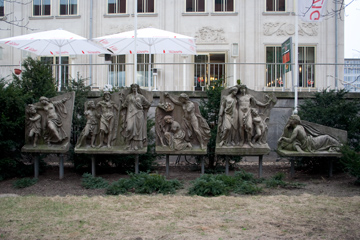
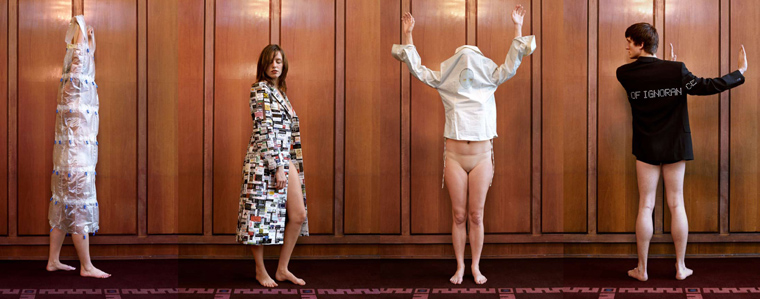
Background
Departing from in recent approaches in cultural studies whose research centres around cultural performativity, we wanted to work together with other institutions in a multi‑sectoral way on the reception and presentation of practices of body language and the action‑oriented, and in way that would permeate as many areas of contemporary social discourse as possible. Our goal was to link our teaching and artistic research with an outwardly directed artistic event to be located in one of Leipzig’s public spaces. Going beyond the visual arts, we wanted to explore the realms of music, literature, film, and dance, in order to investigate transitions, commonalities, and possibilities for complementation. An essential gesture here consisted in opening up our academy door, directing our attention outward towards the immediate neighbourhood, and establishing contacts with institutions whose scopes of activities implied a preoccupation with gesture.
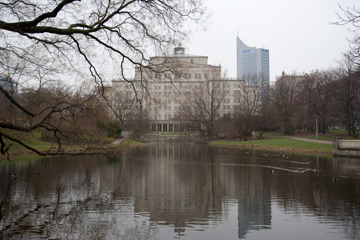
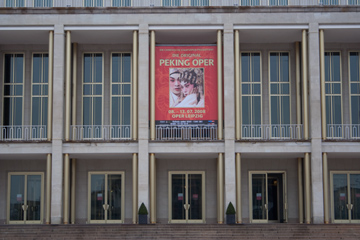
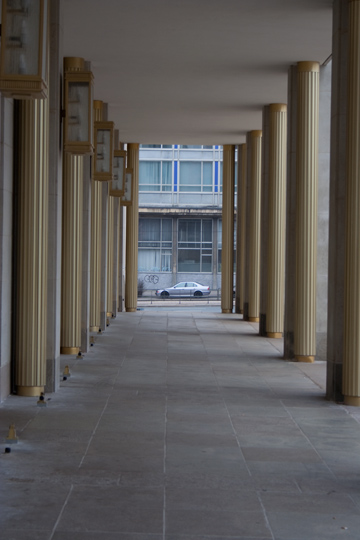
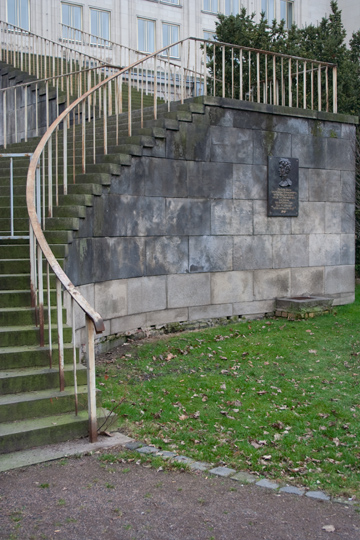
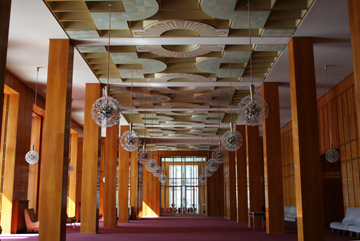
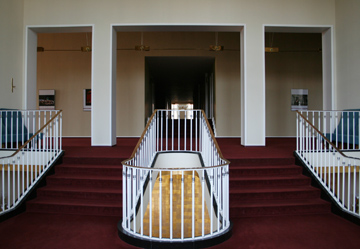
Framework
Because gestures are neither formulated nor enacted in a void, but instead emerge only within a specific social and cultural fabric, we sought out a spatial framework for our exhibition project which is present within the cityscape as an architectural gesture. We wanted a location which implied gesture, one specialising in the artistic preoccupation with gesture, one in which the representation of human behaviour is achieved by means of gesture. We wanted a location that would burst the boundaries of the fine arts and would include a stage, would involve the utopian search for a “total work of art”, one where a variety of art forms could converge experimentally.
Our choice was Leipzig’s Opera House, which we were able to secure thanks to the open-mindedness of its General Manager and Director of Public Relations.
The square flanked by the Opera House constitutes the present day gate to the city’s inner consumerist core. Through its architectonic corpus, this building – a formerly Neoclassical structure that was substantially destroyed in World War II, demolished in the post‑war period, and re‑erected on the same site by the GDR in the 1950s – mirrors the traces of its history. Reflected in the new building – itself having in the meantime become historic – are the gestures of power politics exploited by the previous government, which eclectically appropriated aspects of classical art, integrating them into its own cultural policies.
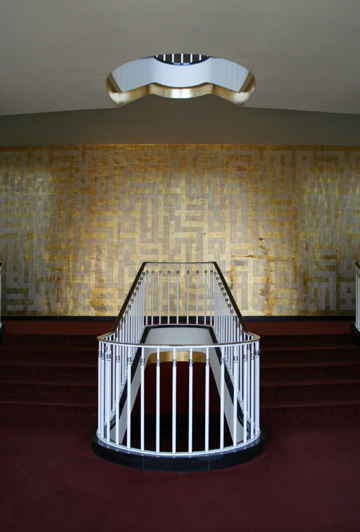
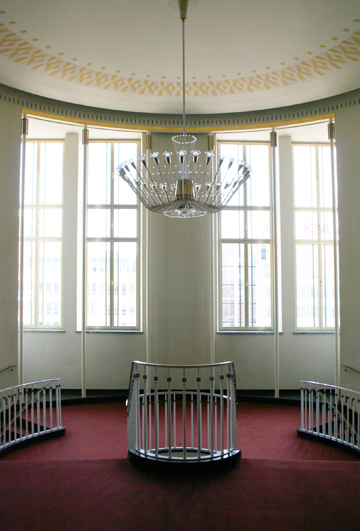
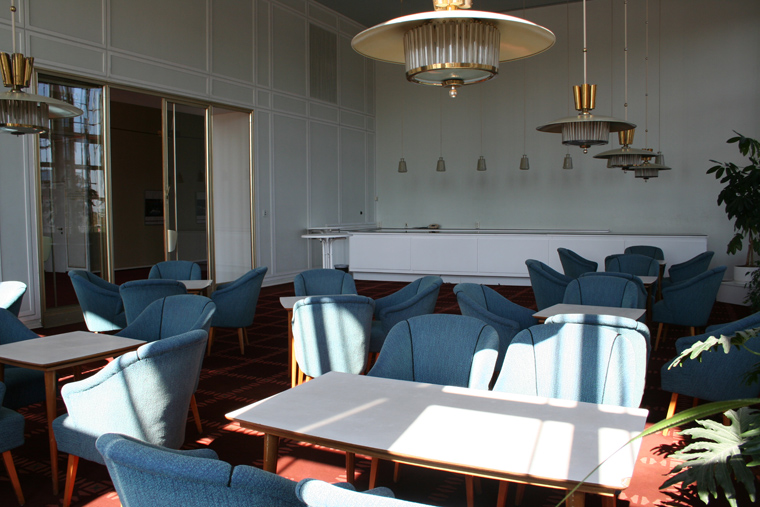
Photos by Alba D’Urbano and Tina Bara
Participating Artists
A Room Of One’s Own About-Chamat, Adidal Liisa-Ahtila, Eija Allamoda, Bettina Altmann, Susanne Bako, Martina Baldessari, John Banz, Stefan Bara, Tina Bayerle, Thomas Bertram, Eva Beumer, Isabeella Bisky, Norbert
von Bismarck, Beatrice Blach, Katrina Black, Steven Bock, John Breitz, Candice Brotherus, Elina Busies, Kathleen
Prof. Dr. Büscher, Barbara Carati, Daniela Chabrowski, Yvon Dr. Darian, Veronika Dijkstra, Rineke Doswald, Christoph D’Urbano, Alba Edison Studio Escherlor, Judith Miriam Farocki, Harun Figura, Martin Firman, Daniel Frey, Peter Giradet, Christoph & Müller, Matthias Gmelin, Felix G.R.A.M. Prof. Dr. Heeg, Günther Heinlein, Pia Helm, Sebastian Hennig, Luise Henry, Julie Hintze, Christian Ide Dr. Holschbach, Susanne Holst-Pedersen, Synne Huth, Susanne Hutschek, Bettina Ingold, Res Jüttner, Juliane Kaiser, Susanne Kipcak, Orhan Kippenberger, Martin Kozyra, Katarzyna Lee, Seulgi Lienbacher, Ulrike LIGNA Logen, Dorothee Lorbeer, Johann Prof. Dr. Loschek, Ingrid Loy, Rosa
Lüscher, Ingeborg Manchot, Melanie Markowitsch, Rémy Mauracher, Michael Dr. Märtens, Gesine Möller, Regina
Muhr, Paula Müller, Julia Müller Waldeck, Regine Muntadas, Antoni Neuhäuser, Nadine Nezaket, Ekici Noack, Marcel Oyama, Yuka Pabst, Andrea Panhans, Stefan Peanutz Architekten Ponger, Lisl Porten, Marion Reimer, Arne
Reuter, Stefan/Bechtle, Fabian Richter, Evelyn Rijkeboer Velsen, Chrystl Rosenquist, James Rost, Andreas Röder, Julian Sander, Katya Schad, Isabelle/Good Work Production mit Dalija Acin Schäfer, Michael Scherstjanoi, Valeri
Schmiedichen, Cindy Schubert, Sandra Schulze-Seeger, Jürgen Seehusen, Jana Sing, Juli Sommer, Rolf
Standke, Yvonne Van der Stappen, Lieve Steiger, Charly Steinbrecher, Erik Stoll, Marianne Stratford, Helen Tan, Fiona Tuymans, Luc Varady, Dagmar Wawro, Silke Weinert, Carolin Wesser, Diana Winterhagen, Tobias Wilke, Hannah Wurm, Erwin Zmijewski, Artur
Exhibition
The spacious rooms of the Opera House represented a challenge that was not easily overcome: art was to be integrated in a way that avoided destroying the atmosphere of the architecture while at the same time appropriating and occupying the space. We worked by integrating the works of art into the architectonic surroundings while simultaneously incorporating the concurrently scheduled performances.
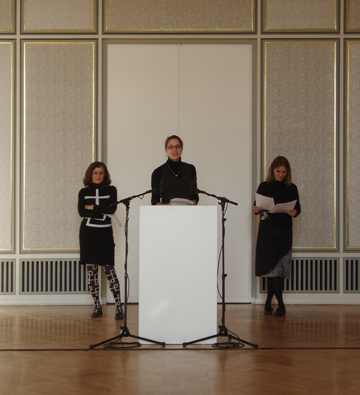
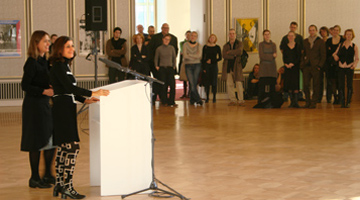
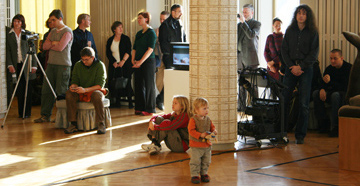
The narrative and conceptual threads ended or began respectively with the opening performance by Ligna Radioballett, which took place on Augustusplatz in front of the Opera House. In the entry area, we confronted the arriving visitors with gestures of greeting , of surveillance, of the public and the private. Intimacy, the state of nakedness, the gesture of dressing and the relationship between body and clothing were deepened in two video projections and an installation of art clothing containing objects by various artists that was set in a large adjoining cloakroom. Following the opening performance, we presented the art clothing in a section of the cloakroom.
In other rooms of the ground floor, we set works that investigated the interdependency between body‑space and body‑mass. The works in one corridor were devoted entirely to gestures of demonstration, and reflected politically coded actions.
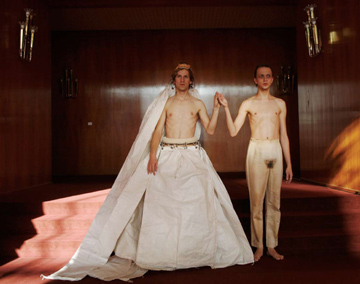
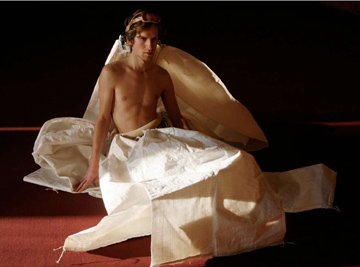
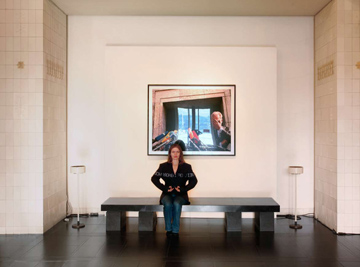
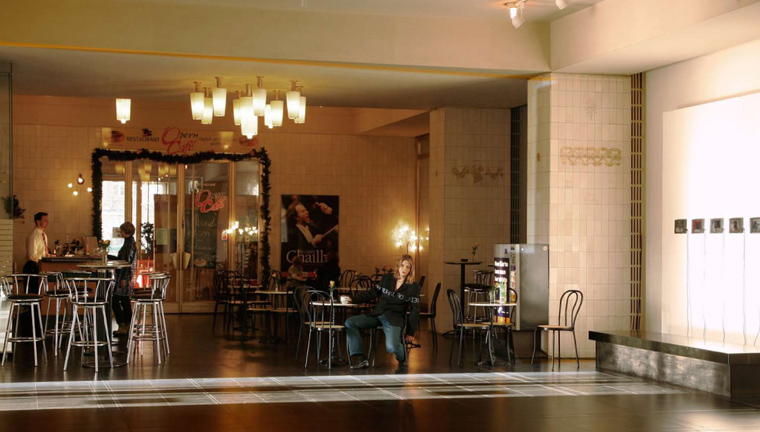
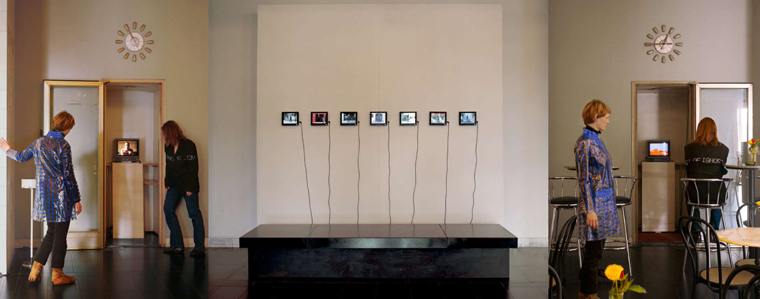
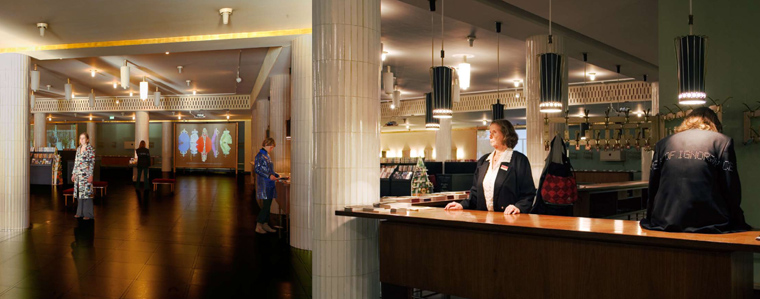
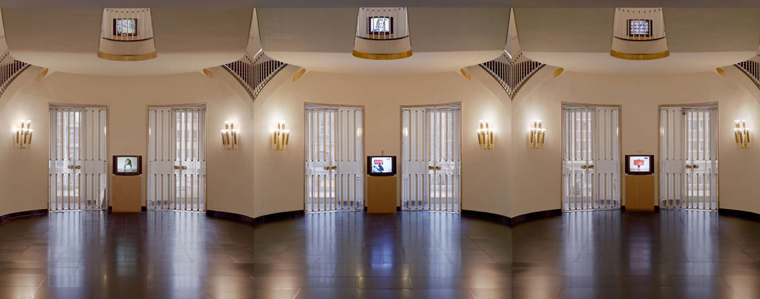
In the niches of the curving stairways we positioned medial works concerned with communication and gestural language lying between bodies, music, dance, and language. In the first story, we show works with themes of spectacle, entertainment, and melodrama. In the buffet rooms of the this story, several works focused directly on the face, with gestures of chewing, eating and singing.
Diana Wesser shifted the “stage” to one of the buffet rooms and choreographed a performance dedicated to the excessive and mythic gestures exchanged between worshipful public and stage artist.
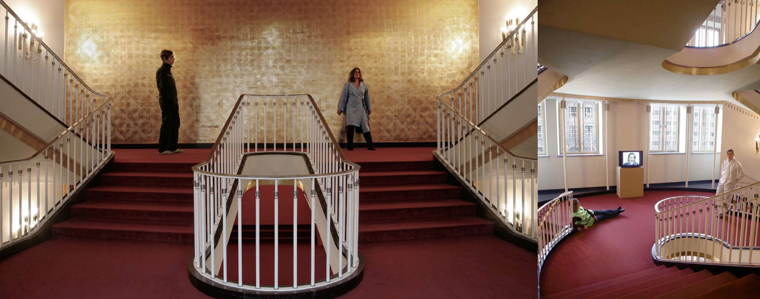
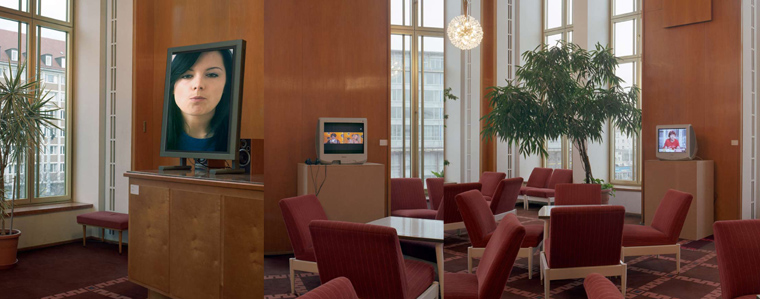
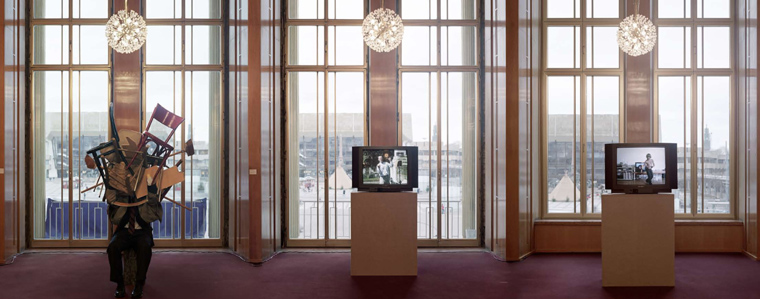
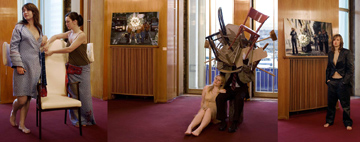
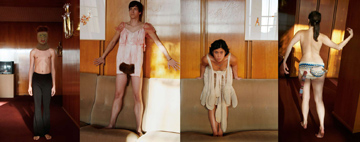
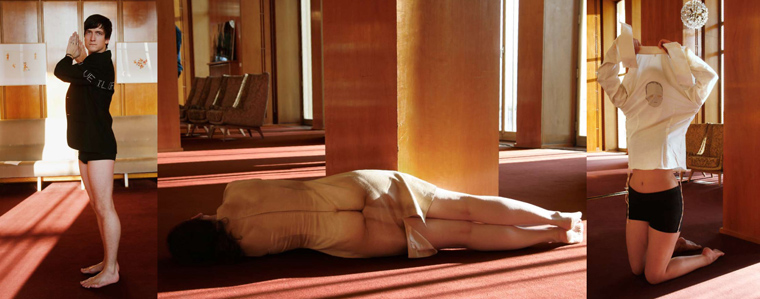
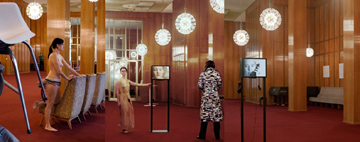
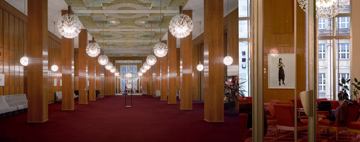
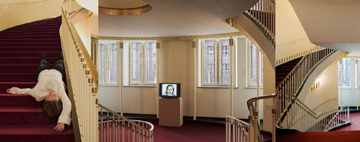
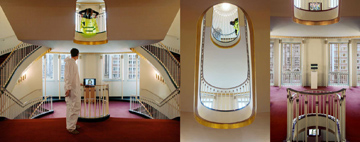
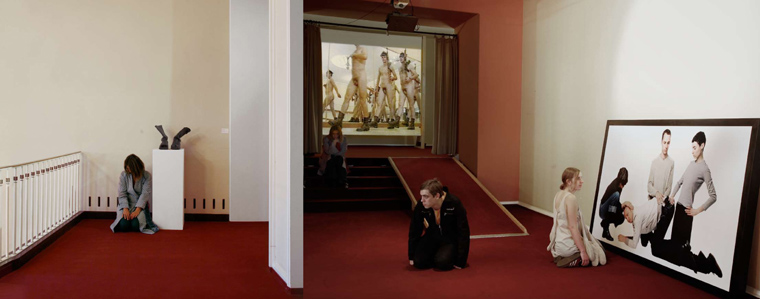
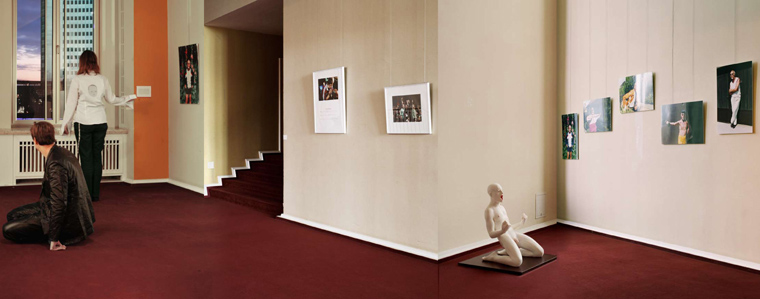
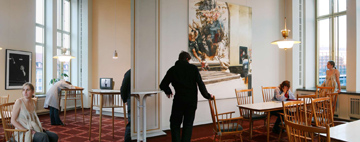

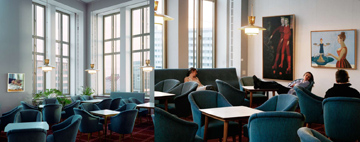
Found on the staircases leading to the upper concert foyer were a series of video works which reflected on social and political themes related to migration and gender and in the second story, this field was broadened out: here, gestures related to sports and religion, existential to military gestures and those of human violence. Gender coded communication between people was interrogated for its feminine and masculine connotations; advertising gestures were converted into youthful poses and entered boundary areas where artistic gestures and those of the artist could assert themselves, all the way to demonstrative gestures of power as the contentual closing off of discourse, all of these intended to allude as a whole to the diffusive character of gesture, its connection to and effectiveness in all social fields. With her performative lecture and guided tour through the interior rooms of the Opera House, set amongst of the works of art, Helen Stratford succeeded in conveying research results, intuitive responses, and presentational practice in a way that was both informative and entertaining.
Since the exhibition project as a whole was conceived as a performative spatial event, we also attempted to integrate performances within the exhibition in the form of several parallel events staged by our partners from the research sector. Christina von Braun, for example, delivered a lecture in the concert foyer on the theme of “Das Weib als Klang. Oper, Text und Geschlecht” (Woman As Sound: Opera, Text and Gender), which was part of Barbara Büscher’s event “Gesten des Melodramatischen“ (Gestures of the Melodramatic). In one of the refreshment rooms, a part of the symposium “Verhaltene Beredsamkeit. Politik, Pathos und Politik der Geste“ (Restrained Eloquence: Politics, Pathos and the Politics of Gesture) was organized under the direction of Veronika Darian.
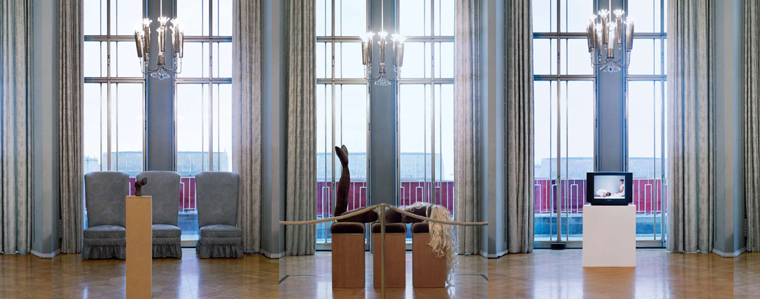
Photos by Alba D’Urbano, Tina Bara, Arne Reimer and Marcel Noack
Performances
For events which could not be presented within the exhibition itself, we used the basement theatre of the Opera House: held here were the main portion of the Theatre Institute’s symposium as well as a stage and video program – events requiring the presentational mode of the illusionist black box.
Tina Bara / Alba D’Urbano: Überleitende Worte
Concert foyer, Opera House, Leipzig
Photos: Martin Jehnichen, Nico Reichelt
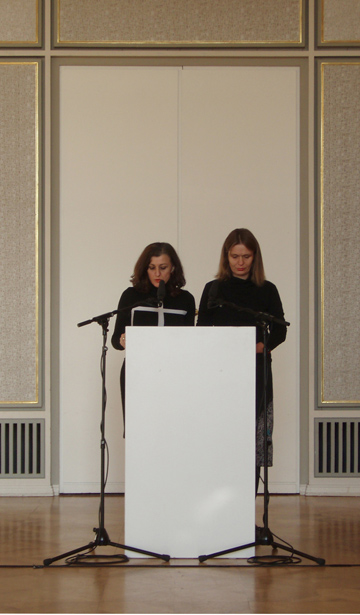
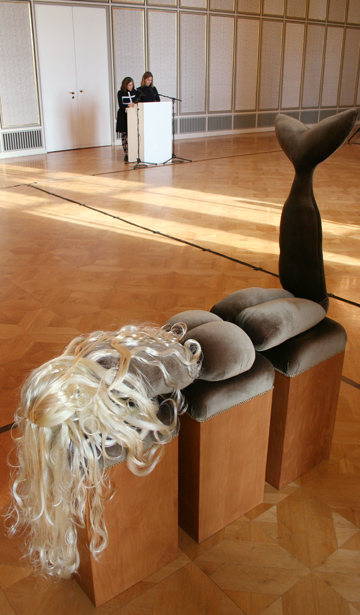
A:N:Y: Tableau Kunstkleider
Leipzig Opera House, Parquet foyer
Photos: Edwin Roelofs, Tina Bara
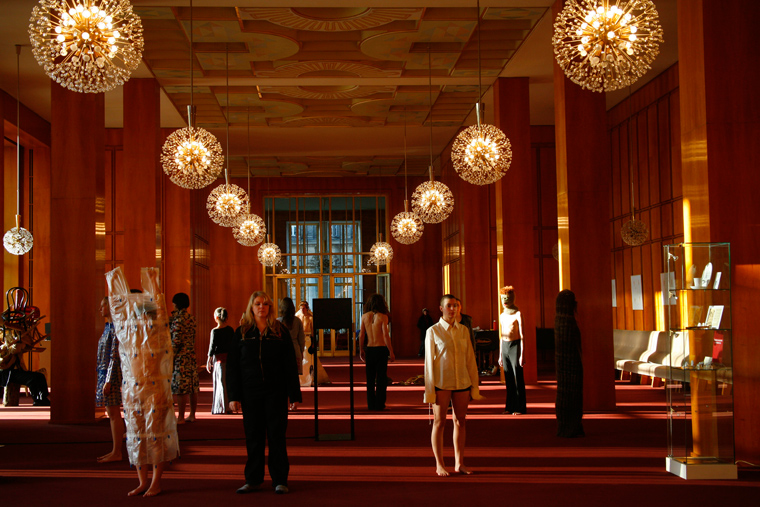
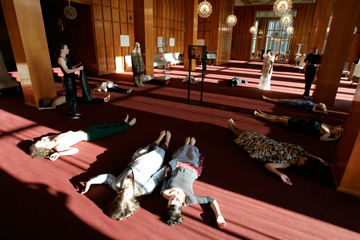
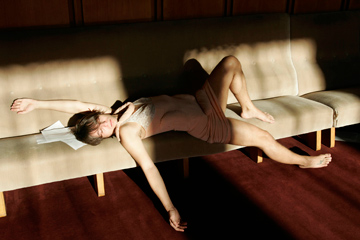
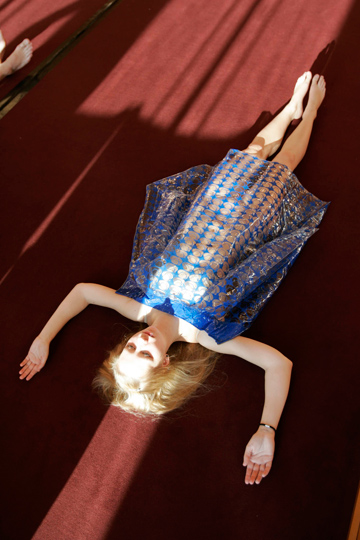
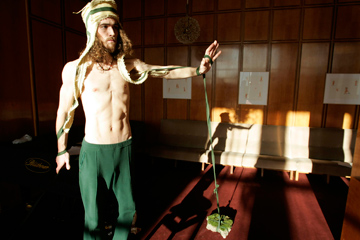
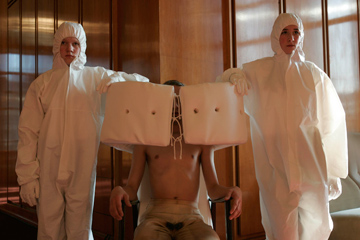
Isabeella Beumer
Photo: Friedrich Block
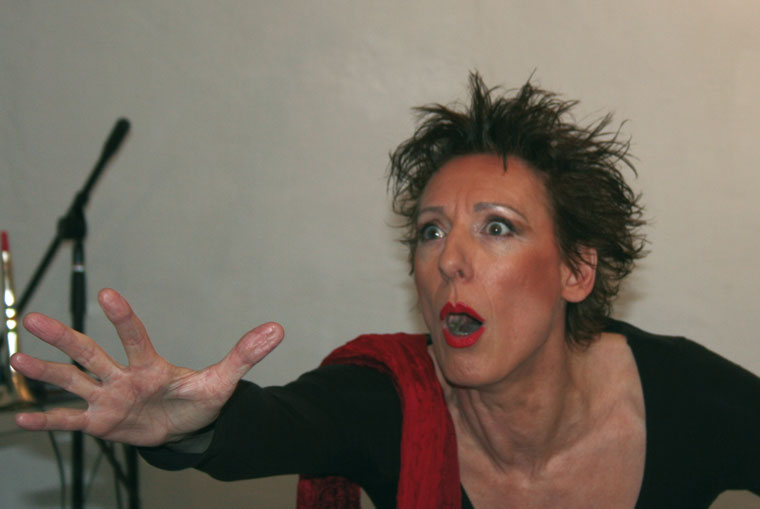
Edison: Caligari
Photos: Marco Rovetto
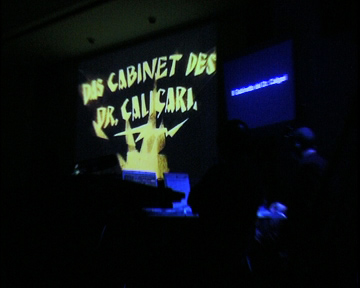
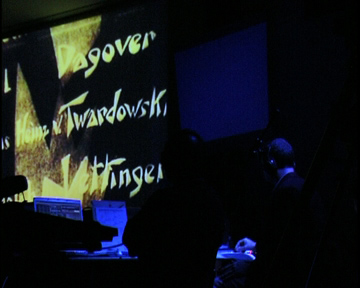
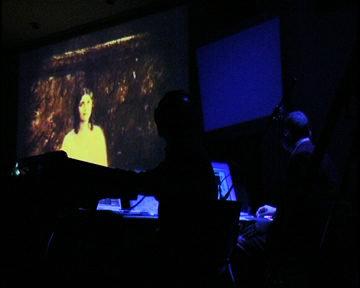
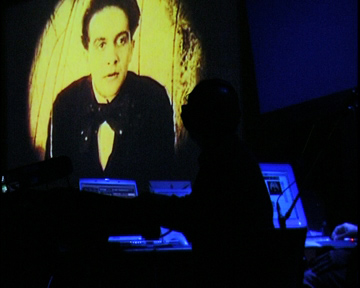
Ligna Radioballett: Normierte Räume – Abweichende Gesten
Augustusplatz, Leipzig
Photos: Nico Reichelt
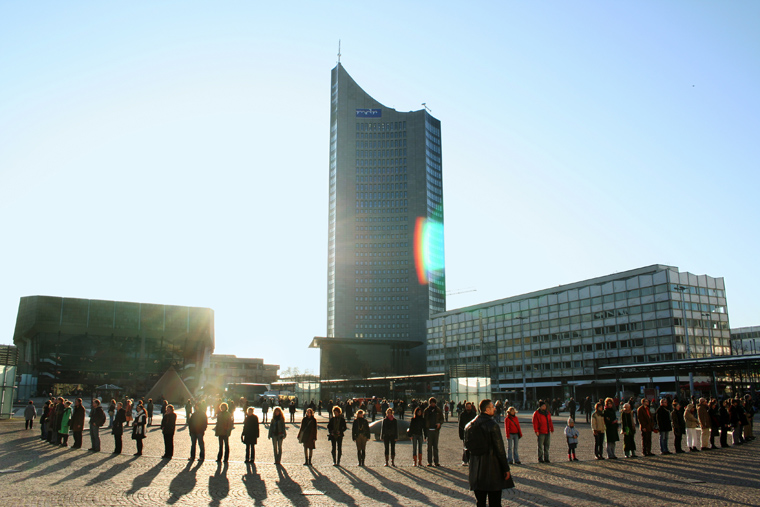
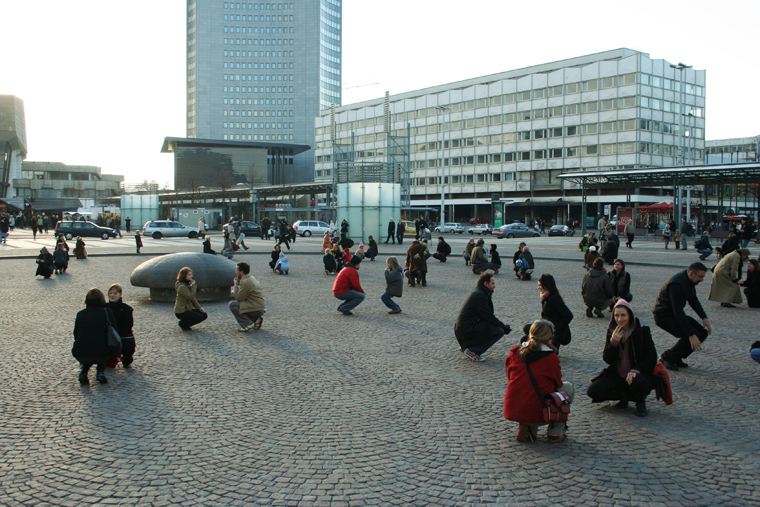
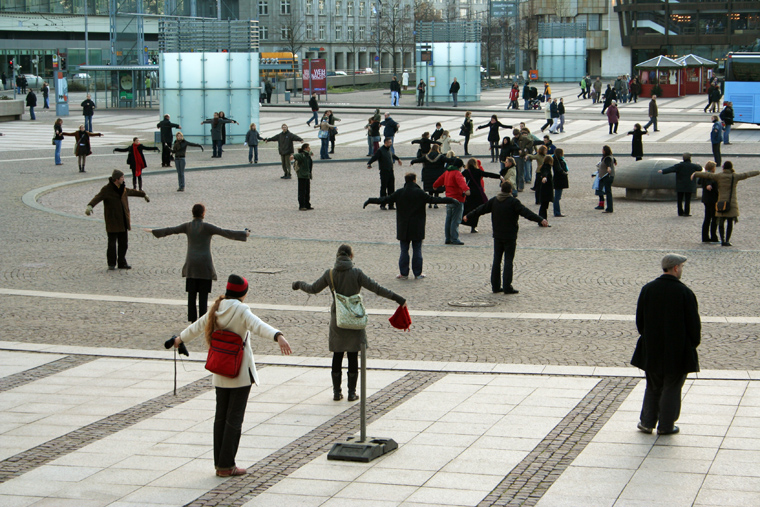
Johan Lorbeer: Rothko Fax
Leipzig Opera House
Photo: Nicolas Reichelt
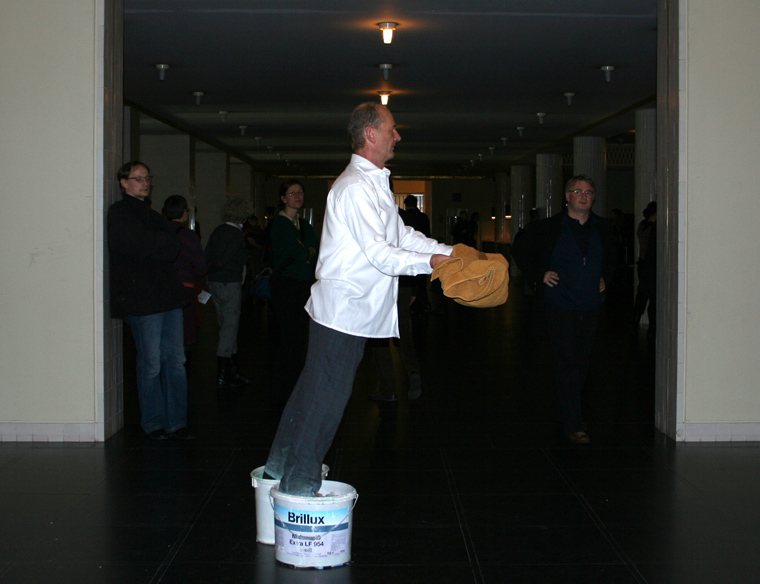
Valeri Scherstjanoi
Photo: Gerald Zörner
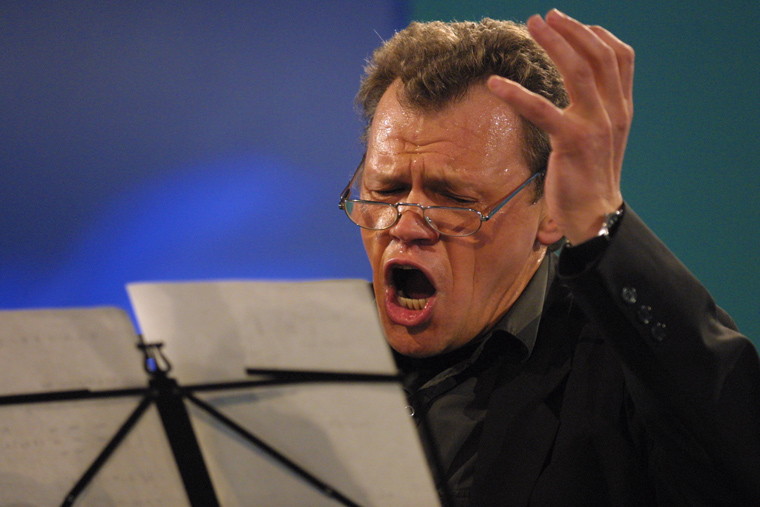
Dalija Acin in „There is no exception to the rule because I am never what I have“
Photo: Annika Lewis
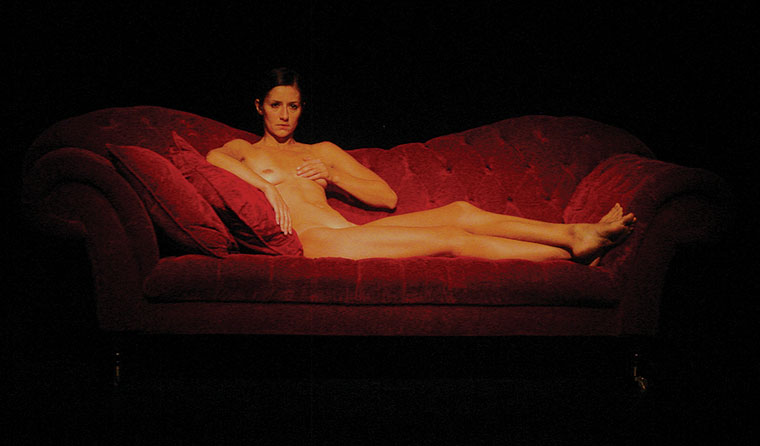
Helen Stratford: Zwischen Haus und Heim
Opera House, Leipzig
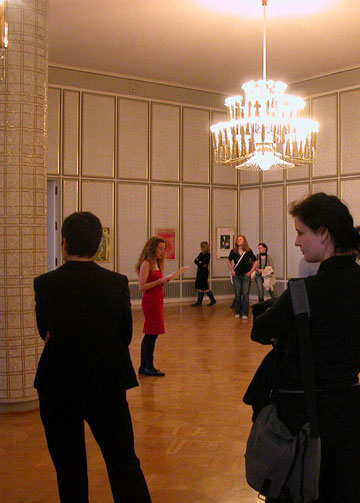
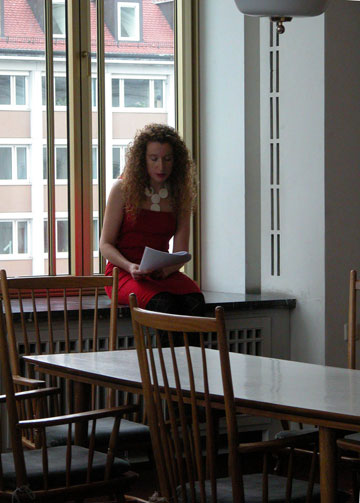
Video Programme
Presented in the video program were works from the art context having narrative characters, and with documentary and conceptual backgrounds: works which raised questions of gesture in the context of a variety of aims, and which required concentration for extended periods of time.
Fiona Tan: Kingdom of Shadows, 2000/2002
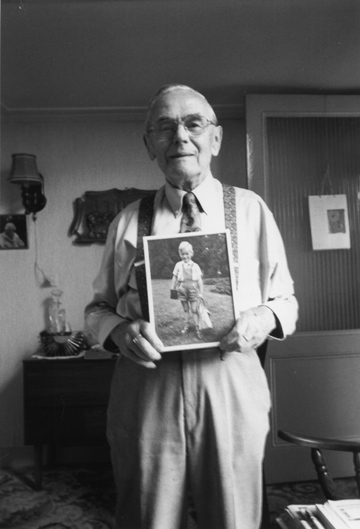
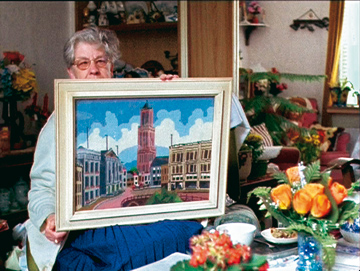
Katya Sander: Exterior City, 2005
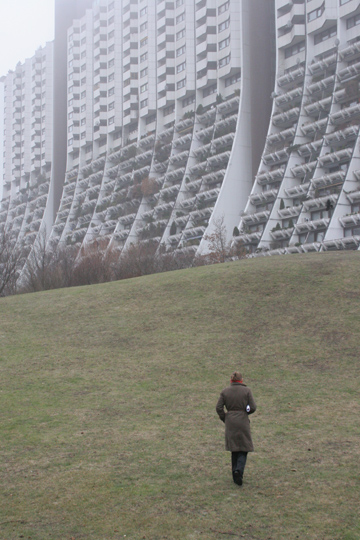
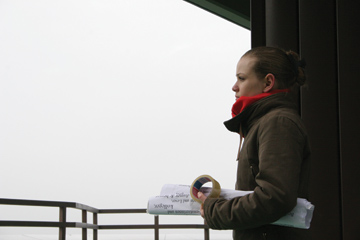
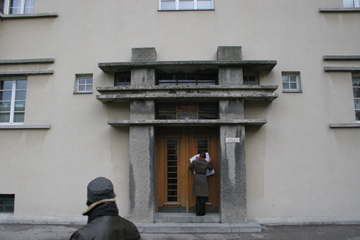
Lisl Ponger: Phantom Fremdes Wien / Phantom Stranger Vienna, 2004
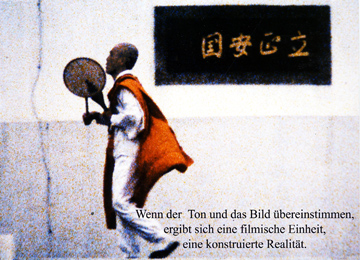
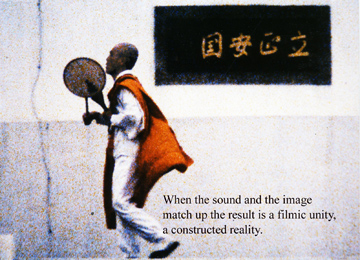
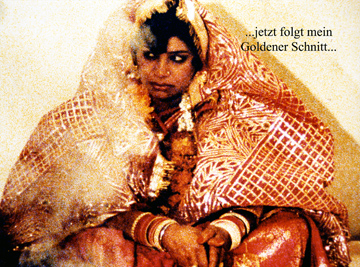
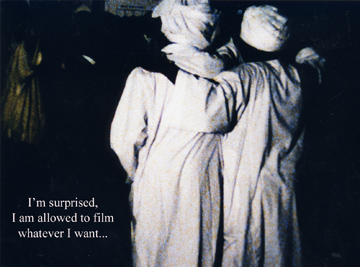
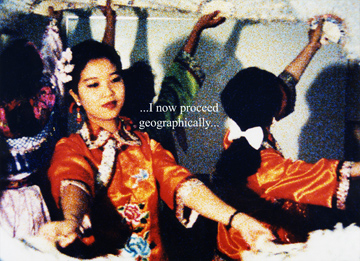
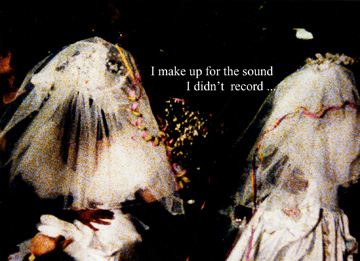
Harun Farocki: Die Bewerbung / The Application, 1997
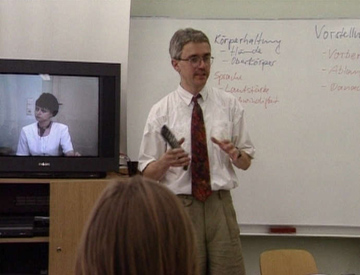
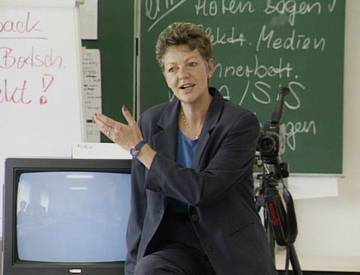
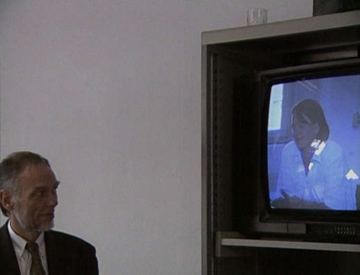
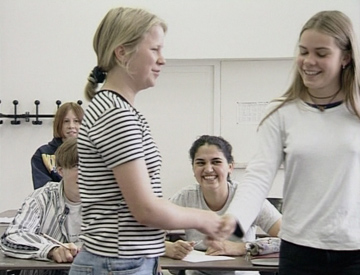
Film
A confrontation with the film medium was extended in the framework of the event “Gesten des Melodramatischen“ (Gestures of the Melodramatic), organized by the University of Music and Theatre. Barbara Büscher curated a film program, which began with films by Douglas Sirk in order to stimulate renewed discussion of films by Rainer Werner Fassbinder, Christoph Schlingensief and Alexander Kluge. Unfortunately, it was impossible for technical reasons to show the films in the Opera House itself, but we were thankful for an opportunity to screen them at the Schaubühne Lindenfels.
